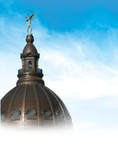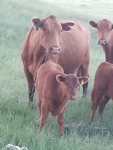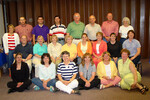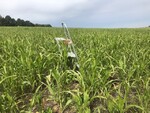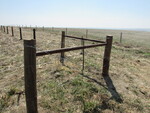Posted date: Sep 22, 2016
by: Jason Padgett
2253 Views
There are a number of these class synopses, and I thought it would be best to start with the Intro class:
Introduction to Computers
If you're thinking of purchasing your first computer, or if you have a computer that you don't really know how to use, hopefully this paper will help get you started.
Lets get everything named and find out something of their function.
These are the minimum requirements for a working computer system:
Computer Interfaces:
Monitor – The visual interface with your computer. With your monitor you can view your interaction with the data on the computer.
Keyboard – Allows you to input text, numbers, and commands to the computer.
Mouse – Controls the cursor, the left mouse button allows to select items on the screen, the right button brings up a menu that allows you to do more than just select an item.
Computer – This is where your data is stored, processed, altered by the keyboard and mouse, and sent to the display for viewing.
Inside your computer:
Lets briefly cover the components inside your computer, you wont need this information for your day to day usage of your computer, but it is good information to have just in case you have your computer worked on.
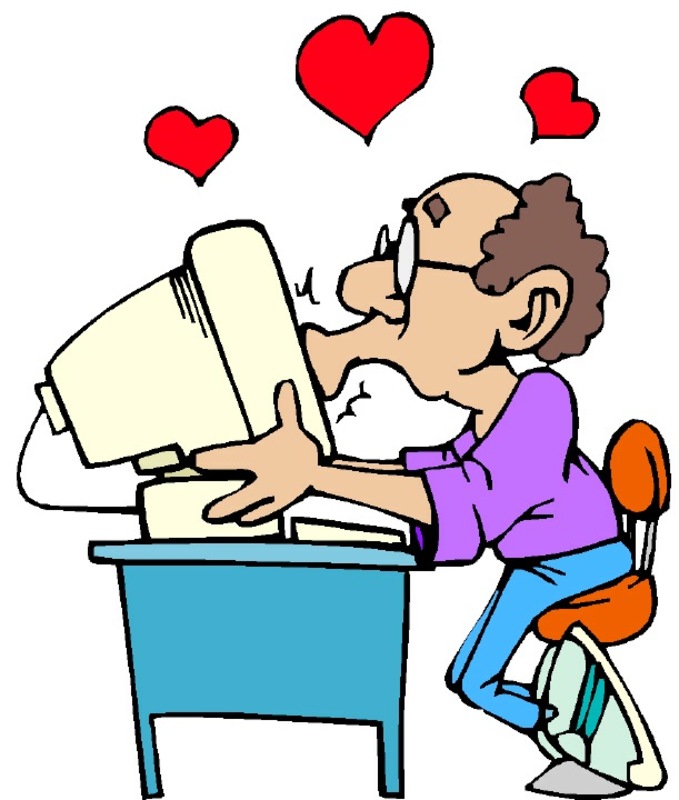
Motherboard – This is the backbone of the system. All other components are plugged into the motherboard.
Processor – The brain of your computer. As the name implies, the processor processes data. It makes changes to the data stored in RAM.
Hard Drive / Storage – Where all of your data, operating system, and programs are saved and stored. The larger the hard drive, the more data you can store.
RAM / Memory – When you want to open a program or work on a document, the information is found on the hard drive and copied to RAM, it can then be used or changed as you wish. When you are done using the program or document, it can then be saved back to the hard drive for storage until you need it again. The more RAM you have, the faster you computer will work, because more data can be worked on at one time.
The front of your computer:
Power button – Turns the computer on. This button is not used to turn your computer off though, powering down the computer will be done from the desktop.
CD or DVD Drive – Allows you to read from, or write to CD's and DVD's.
USB Ports – Small rectangle ports that allow you to use USB connections to read or write data from a peripheral devise, such as a Flash drive, camera, or phone.
The back of your computer:
The cable connections for your computer – most of your cables can only be plugged into one jack, and when you first buy the computer, there is usually a diagram of where each cable goes.
Boot Time:
OK, lets start your computer.
Powering up - When you press the power button, the computer will begin finding all of the devices and components connected to the motherboard. If everything it needs is connected, then it will load the operating system. If you have your system password protected, you will be shown a log on screen, at which you will have to type in your user name and password to continue. If you do not have your system password protected, then you will skip the log on screen and proceed directly to the desktop.
At the desktop – The look and layout of your desktop may vary depending on what operating system and version you have on your computer, but basically, they all have the same function. It is the blank canvas, upon which you can open programs that get you on the internet, write and change documents, view pictures, write and read emails, and just about anything else you can imagine.
Most of these programs can be accessed through the 'Start Menu,' usually located at the bottom left corner of the desktop.
Using your mouse, move the pointer over the Start button and press the left mouse button to select. A menu will pop up. In this menu you will find a collection of things you can do with your computer. To view a full list of programs, you may need to click the left mouse button on "All Programs", or "All Apps."
Lets review some of the items you may find in the start menu:
(Your User Name) – This option, which will be named the same as whatever your user name is, will open the folder that has in it: Documents, Pictures, Music, and others.
Documents, Pictures, Music – Selecting these options will open the corresponding folder which has your personal data stored.
Computer – Clicking this option will open a window that shows you the folder system of your computer. You can enter into any folder by double left clicking the folder you want to view; to move up in the folder system, you can press the icon at the top of the window that looks like a folder with an up arrow. The folder system is explained in the Hardware and Software section.
Control Panel – A variety of tools used to control how your computer functions, including changing the way everything looks on the screen, and what kinds of sounds it makes. Many of the aspect of your computer can be control from here.
Devices and Printers – selecting this option will open a screen that shows printers and devices that are connected to your computer. And from here you can control the settings for these devices.
Shutdown – Here is the proper way of shutting down your computer. You also have the option to reboot the computer, which will automatically shutdown and then restart your computer.
A list of your most used programs may also appear when clicking the start menu. Items can be taken off of this list by putting the mouse cursor over the item, clicking the right mouse button, find "Remove from this list" in the menu, and then select it by clicking the left mouse button
Hardware and Software:
Hardware is anything physical: The motherboard, Hard drive, monitor, the cables, the MP3 player you connect via a USB port.
Software is the data that is stored and manipulated in the computer.
Software is organized in a system of files and folders. Think of a filing cabinet, the drawer is your computer, when you open the drawer you can see a collection of folders, these folders are labeled according to what type of information is stored in them. Now, inside those folders may be other folders, for more specific classifications of that data. This process of creating more specific folders can happen many times until you reach the file you are looking for. Organizing all of the computer's data in this way helps by having specific locations where data can be found immediately, instead of having to look for it each time.
Lets see an example:
In your folder system, your computer is usually called C:. C: is your primary partition or section of your hard drive, upon which everything else is stored. Within C: is a collection of folders, a few of them are Windows, Program Files, and Users. If you open the Users folder, you will find a folder for each user of the computer. If you open the folder with your user name, you will find a folder for each of your kind of stored data; Documents, Pictures, Music, Downloads, and so on. Now if you open the Pictures folder, you will find your stored pictures, the pictures themselves are called files. You can further organize your pictures, inside of your Pictures folder, you can create folders which separate your pictures by date, or subject, or event. You can create as many different classifications as you wish to help you find the data you are looking for.
So,
C: →
Windows
Program Files
Users →Administrator
Guest
(your user name) →Downloads
Documents
Music
Pictures →Sarah
John
Dave
Jodi →Jan 01
Feb 01
Mar 01
Apr 01 →pic1.jpg
And the address for pic1.jpg would be:
C:\Users\(your user name)\Pictures\Jodi\Apr 01\pic1.jpg
The .jpg attached to the file name just tells the computer what kind of file it is and which program is used to open the file.
Copy, Cut, and Paste – Lets say that you open pic1.jpg and realize that the picture was actually taken in May 01. So, we need to create a folder called "May 01" inside of the "Jodi" folder, and then get our picture moved into that folder. We know how to move into a folder by double-clicking the folder, and we can move up in the folder system by pressing the icon that looks like a folder with an up arrow.
OK, lets create that folder. Click the start menu at the bottom left corner of the desktop, and then click "Pictures." A window will pop up showing you the contents of your Pictures folder. This is a picture of Jodi, so we double click the Jodi folder to see it's contents. There isn't a May 01 folder, so we need to create it, place your pointer over some white space in the folder window, you don't want to be over another folder. Right click your mouse and select "Create Folder", or "New" and then "Folder" from the menu. A new folder will appear in the window and you will have the chance to name the folder, let's name it "May 01". If you need to rename the folder, you put your pointer over the folder, right click your mouse and select "Rename." OK, we have our folder that we are going to put our picture in, navigate back up to the "Jodi" folder by pressing the icon at the top of the window that looks like a folder with an up arrow, and then double click the “Apr 01” to move into that folder.
Put the pointer over the "pic1.jpg" file and right click the mouse, select "Cut". Press the folder-up icon to move back into the "Jodi" folder, and then double-click the "May01" folder we created, put the pointer over any white space in the window, right click the mouse and select "Paste". The "pic1.jpg" file is written in the May 01 folder and erased from the Apr 01 folder.
If you had wanted to keep a copy in both the Apr 01 and May 01 folders, you would select "Copy" instead of "Cut" in the previous example. This will write the pic1.jpg file into May 01 with out erasing it from Apr 01.
For reference I will list a few of the most commonly used key functions. You can press these keys instead of using the right mouse button menu (hold down the ctrl key when you press the other key):
ctrl + a Select all
ctrl + z Undo last action
ctrl + x Cut
ctrl + c Copy
ctrl + v Paste
Software comes in a variety of different classes:
Operating System / System files – These are the files that control the background functions of your software. These files make everything work. System files are located in your Windows folder. Please never change, delete, or move any files under the Windows folder. Your computer simply wont work.
Program Files – Programs are batches of software that are used to do something specific, for example, you use a program as an internet browser, or email, or view pictures, or the game you like to play is a program. Programs are not system files, and computer does not rely on them to function. Programs are the extras that make computing fun, and are usually loaded after, or separate from the operating system; although your operating system will come with a collection of programs that will most likely use. These will be stored in the Program Files folder.
Documents – These are your files. The letter you are writing, the pictures you saved from the digital camera, your financial spreadsheets, the songs you downloaded, or whatever files you create. These are stored in the Users/(your user name) folder. The Users/(your user name) folder is yours to do whatever with, you can create folders, delete folders, or rename folders to whatever helps you keep your data organized. It is important however, to keep pictures in the Pictures folder, music in the Music folder, documents in the Documents folder, and so on. The reason for this is that programs that look for your pictures is going to look in the Pictures folder. If you put your pictures in your Documents folder, the program you are using wont find them.
Let's get on the Internet:
Internet Browsers – There are a wide variety of internet browsers you can use, but they all have the same function; they show you web pages found on the internet. Through them you can view web pages and jump from one page to another. The main internet browsers in use are Internet Explorer, Firefox, Safari, and Google Chrome. Which you use doesn't matter. At the top of the internet browser window is a box with an address in it. The address looks something like: http://www.google.com . You can type in a website address in this box and hit the enter key, and the browser will take you to that website. If you don't know what the address is, you can look it up using a search engine.
Search Engines – The search engine is your tool for searching the internet. The search engine scans the internet searching for websites, whenever it finds one, it saves some basic information about the site in a database. So, when you go to the search engine and ask it to look up a subject, it searches it's database and reports back to you with every website that fits your request. Then you simply need to click on the website in the list that you want to view, and you will be taken there.
There are a wide variety of search engines, a few of them are:
http://google.com
http://bing.com
http://ask.com
http://yahoo.com
Favorites / Bookmarks – When you find a website you like, and you know that you are going to want to return at some later time, you can add it to your favorites list. Depending on the browser you are using there will be a button called either "Bookmarks" or "Favorites." Clicking this button will show you all of the website addresses you have saved, and the option to add a website to the list. While viewing the web page you want to save, click the Favorites or Bookmarks button, find the “Add Bookmark / Favorites” option and click it. A window will pop up asking you what you want to call this link, the title of the web page will be the default, but you can change the name to anything you want. Then click the "OK" button. Your web page is now saved in your Favorites list, when ever you want to return to that page simply click Favorites and then click the link you created, and you will be directed to that page.
